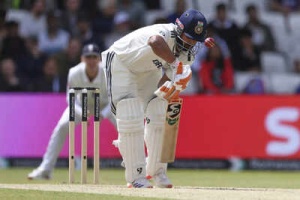Walking is an easy and powerful way to enhance cardiovascular wellness. You also don't need any equipment to walk, because this exercise can be done in any location, anytime. Walking includes two primary styles which are brisk walking, and power walking. The two walking methods deliver heart health advantages to people, yet most individuals are unaware which walking style provides superior benefits. Today, we evaluate power walking and brisk walking to determine their heart health effects, while identifying the most suitable walking method based on individual fitness goals and current fitness level.
Brisk walking requires a speed that elevates your heart rate while making breathing slightly more difficult, yet still enables normal conversation. The typical brisk walking speed ranges between 3 to 4 miles per hour. Regular brisk walking practice leads to improved blood circulation and decreased blood pressure, while building heart muscle strength throughout time. Research indicates that daily brisk walking for 15 minutes decreases premature death risk by 20%, which leads to substantial cardiovascular health benefits. The practice of brisk walking helps people lower their cholesterol levels and control their weight, which are essential for curbing heart disease. Brisk walking serves as a perfect moderate-intensity exercise, because it integrates seamlessly into your regular daily activities.
Power walking represents a faster and more demanding walking method than brisk walking. People who power walk maintain speeds between 4 to 5 miles per hour, while using purposeful arm swings and extended strides, to boost their workout intensity. Power walking engages additional muscles throughout the upper and lower body than brisk walking does, and elevates exercise intensity to vigorous levels. The increased intensity of power walking leads to better aerobic fitness (VO₂ max) and heart oxygen delivery, because it burns additional calories. People who want to advance their cardiovascular fitness through exercise, should consider power walking because it provides an elevated workout intensity.
Power walking delivers more intense heart health advantages than brisk walking because it generates greater benefits for the cardiovascular system. Studies indicate power walking delivers superior results for VO₂ max enhancement which directly benefits heart health. The high-intensity nature of power walking leads to better management of blood pressure and cholesterol and blood sugar levels. Brisk walking effectively reduces the chances of heart-related problems such as stroke and heart attack, although power walking provides more intense health benefits. People with joint problems or beginners should choose brisk walking, because it provides a safer and more enduring exercise experience. People who want to maximise their cardiovascular fitness and burn more calories, should consider power walking as their preferred walking style.
The amount of calories burned during exercise directly impacts heart health, because weight management through calorie control decreases heart workload. Power walking burns more calories than brisk walking, because it requires faster movements and activates additional muscles in the body. A 160-pound person will burn 181 calories during 30 minutes of power walking, but only 119 calories when brisk walking. The additional calorie expenditure from power walking helps people lose weight or maintain their weight, which protects their heart health by decreasing obesity-related dangers. Brisk walking helps with weight management and most people can maintain it for extended periods, so it serves as a convenient daily exercise option.
People who want to start improving their heart health through walking, should begin with brisk walking because it provides a safe entry point for beginners, and those with health restrictions. The exercise provides gentle joint support while allowing people to maintain their workout duration, which creates essential conditions for heart health improvement. People who want to boost their workout intensity and gain fast heart and fitness results, should choose power walking.
Disclaimer: This article is informational only and not a substitute for medical advice
Newer articles
Older articles
 Wimbledon 2025: Dates, Prize Money, and How to Watch Live in US & India
Wimbledon 2025: Dates, Prize Money, and How to Watch Live in US & India
 Gujarat Cricket Association Set to Launch T20 Tournament in 2025-26 Season
Gujarat Cricket Association Set to Launch T20 Tournament in 2025-26 Season
 Praggnanandhaa Joins Carlsen's Team Liquid Ahead of Esports World Cup Showdown
Praggnanandhaa Joins Carlsen's Team Liquid Ahead of Esports World Cup Showdown
 India vs. England 2025: Broad Warns England of Lethal Indian Pace Attack Ahead of Lord's Test
India vs. England 2025: Broad Warns England of Lethal Indian Pace Attack Ahead of Lord's Test
 Smith Poised for Grenada Test Return After Finger Injury Recovery
Smith Poised for Grenada Test Return After Finger Injury Recovery
 Raducanu Shuts Down Alcaraz Romance Rumors, Confirms US Open Doubles Partnership
Raducanu Shuts Down Alcaraz Romance Rumors, Confirms US Open Doubles Partnership
 Asia Cup 2025: ACC Eyes September Launch Amid Easing India-Pakistan Tensions
Asia Cup 2025: ACC Eyes September Launch Amid Easing India-Pakistan Tensions
 Pant's Fearless Batting Sparks Gilchrist Comparisons: Chappell's Honest Assessment of India Star's Twin Tons Against England
Pant's Fearless Batting Sparks Gilchrist Comparisons: Chappell's Honest Assessment of India Star's Twin Tons Against England
 Mandhana Makes History: First Indian Woman to Score Centuries in All Cricket Formats
Mandhana Makes History: First Indian Woman to Score Centuries in All Cricket Formats
 Prithvi Shaw Acknowledges Career Setbacks, Cites Distractions and Poor Choices
Prithvi Shaw Acknowledges Career Setbacks, Cites Distractions and Poor Choices